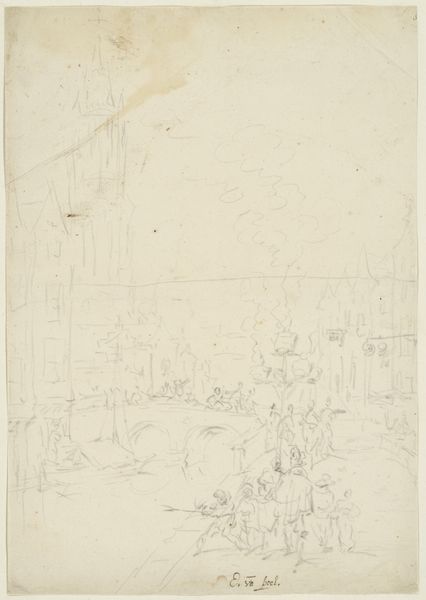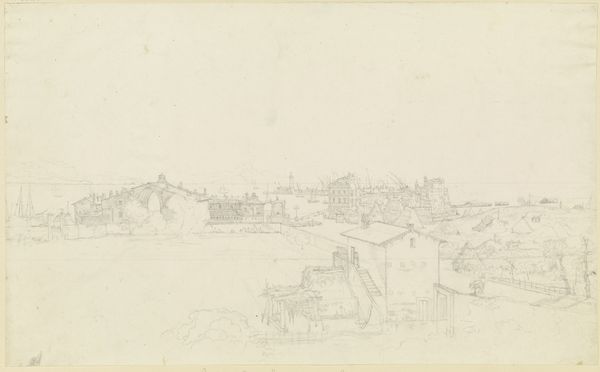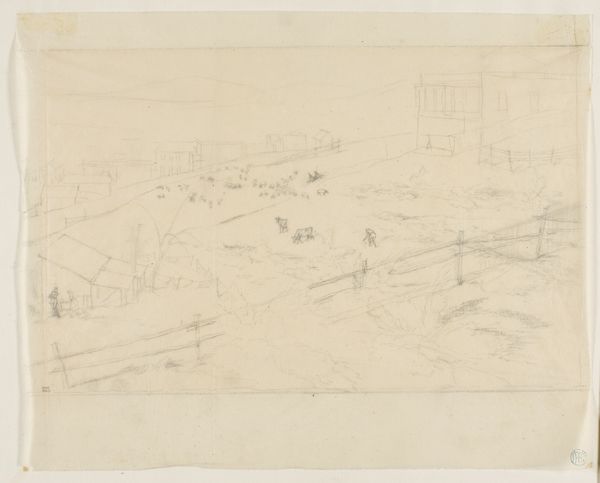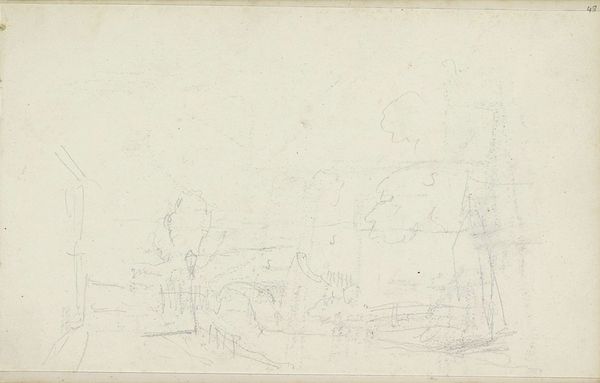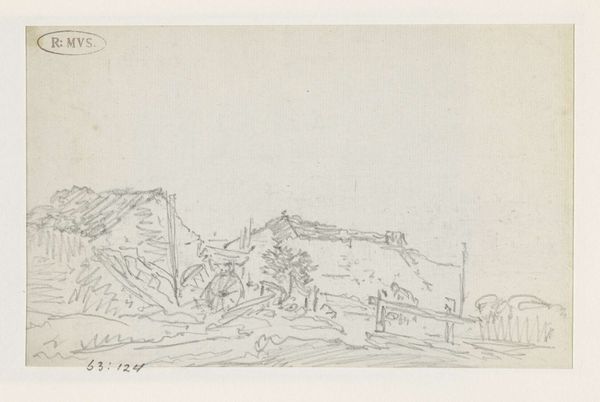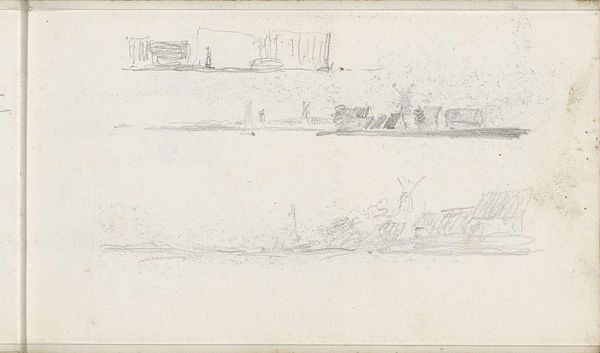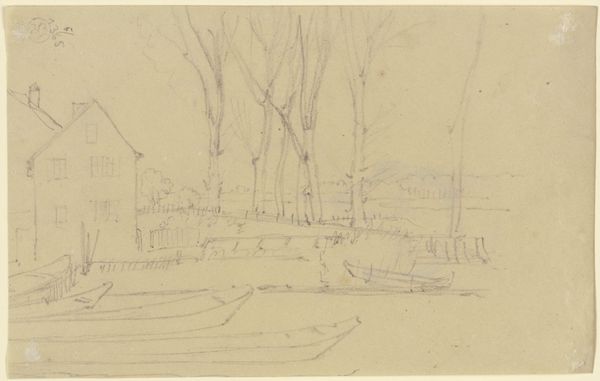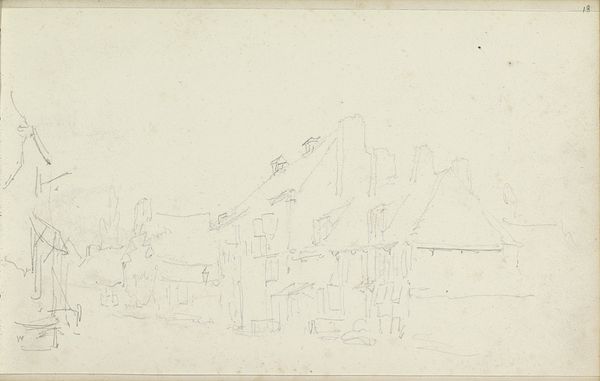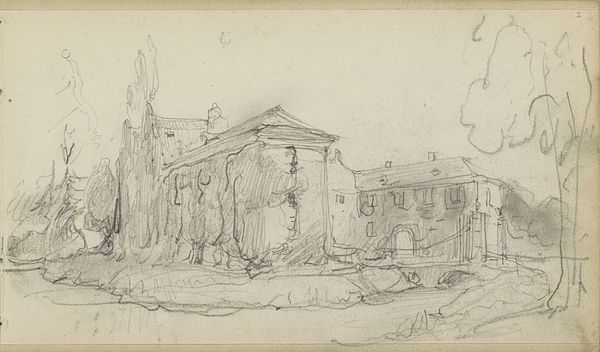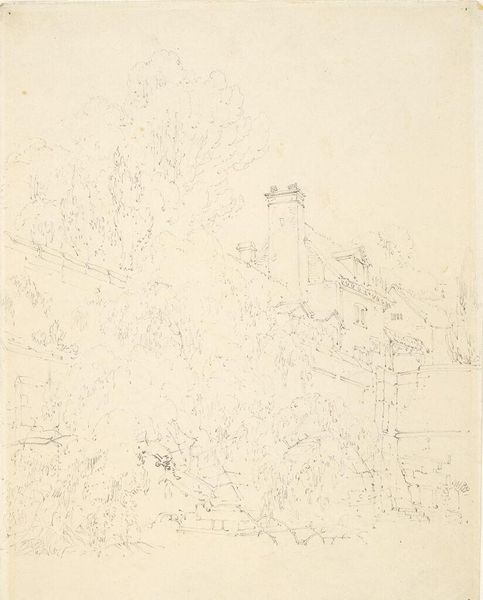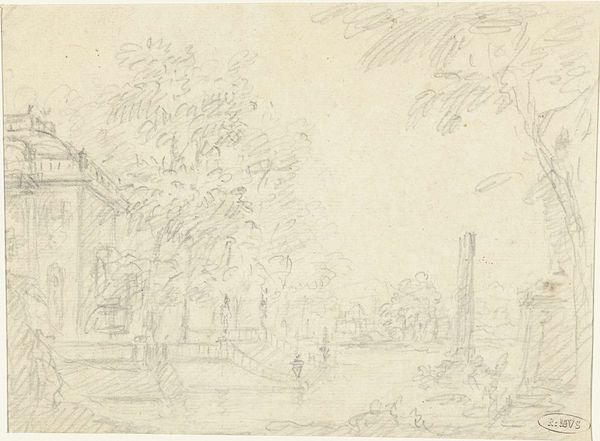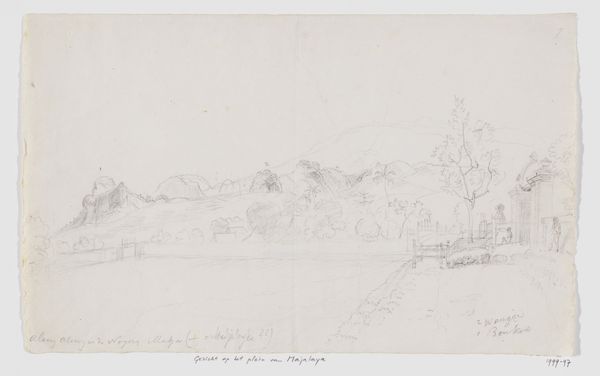
drawing, pencil
#
drawing
#
neoclacissism
#
light pencil work
#
quirky sketch
#
landscape
#
personal sketchbook
#
idea generation sketch
#
sketchwork
#
romanticism
#
pen-ink sketch
#
pencil
#
sketchbook drawing
#
cityscape
#
storyboard and sketchbook work
#
sketchbook art
#
initial sketch
Dimensions: height 358 mm, width 521 mm
Copyright: Rijks Museum: Open Domain
Editor: This is Hendrik Voogd's "Gezicht op Tivoli, schets," dating from 1778 to 1839. It's a pencil drawing, currently held at the Rijksmuseum. The light pencil work and soft lines give it an ephemeral quality. How do you interpret this sketch? Curator: Well, given the Neoclassical and Romantic influences evident here, it's impossible not to see this through the lens of the Grand Tour and its implications. These landscapes weren't just innocent scenes; they were signifiers of cultural capital, reinforcing a specific European identity that had the privilege and power to travel and appropriate imagery from other lands. Do you see the power dynamics embedded in that gaze? Editor: I hadn't considered the power aspect so explicitly, but I see what you mean. The artist, part of the privileged class, depicts this idealized Italian landscape, almost possessing it through art. So, it’s not just about the aesthetics; it's also about the social context. Curator: Exactly! It makes me think of Edward Said’s "Orientalism". Though this isn't the "Orient", there's a similar dynamic at play: a Western artist defining and framing another culture through his own perspective. Look at the composition - is it presenting an authentic representation or a curated experience designed for a specific audience? Editor: That makes you wonder what a local’s view of Tivoli would look like during this time, or if they had the means and platform to create or disseminate such images. Thanks, I’m definitely going to keep the Grand Tour's implications in mind going forward. Curator: Precisely! Thinking about art through intersectional lenses enriches our understanding of both the work itself and the world it reflects, prompting us to question narratives and uncover marginalized voices.
Comments
No comments
Be the first to comment and join the conversation on the ultimate creative platform.
